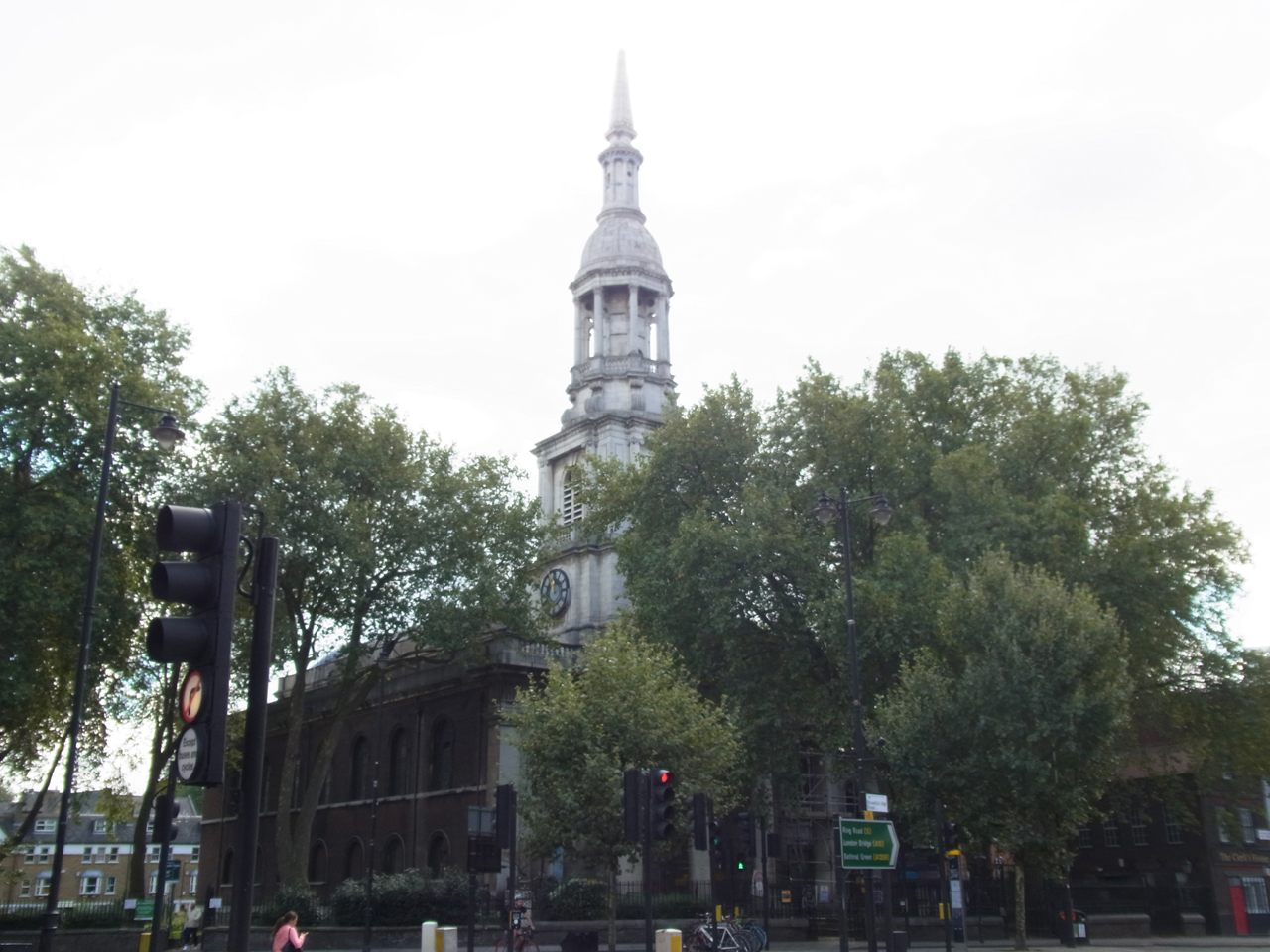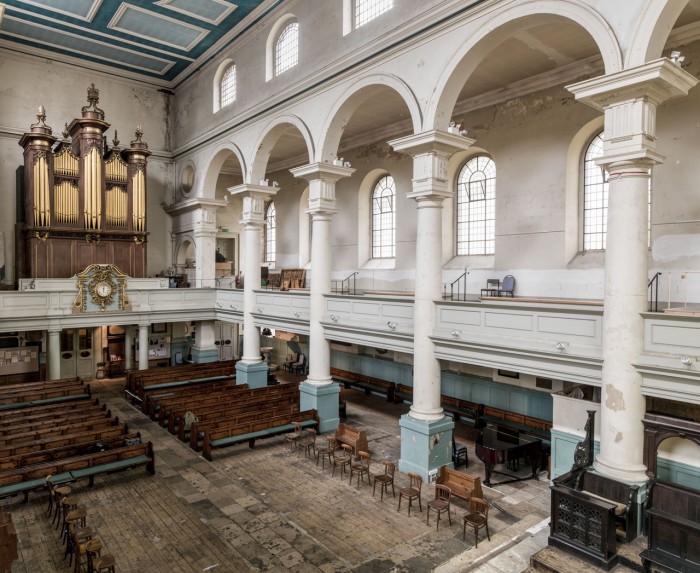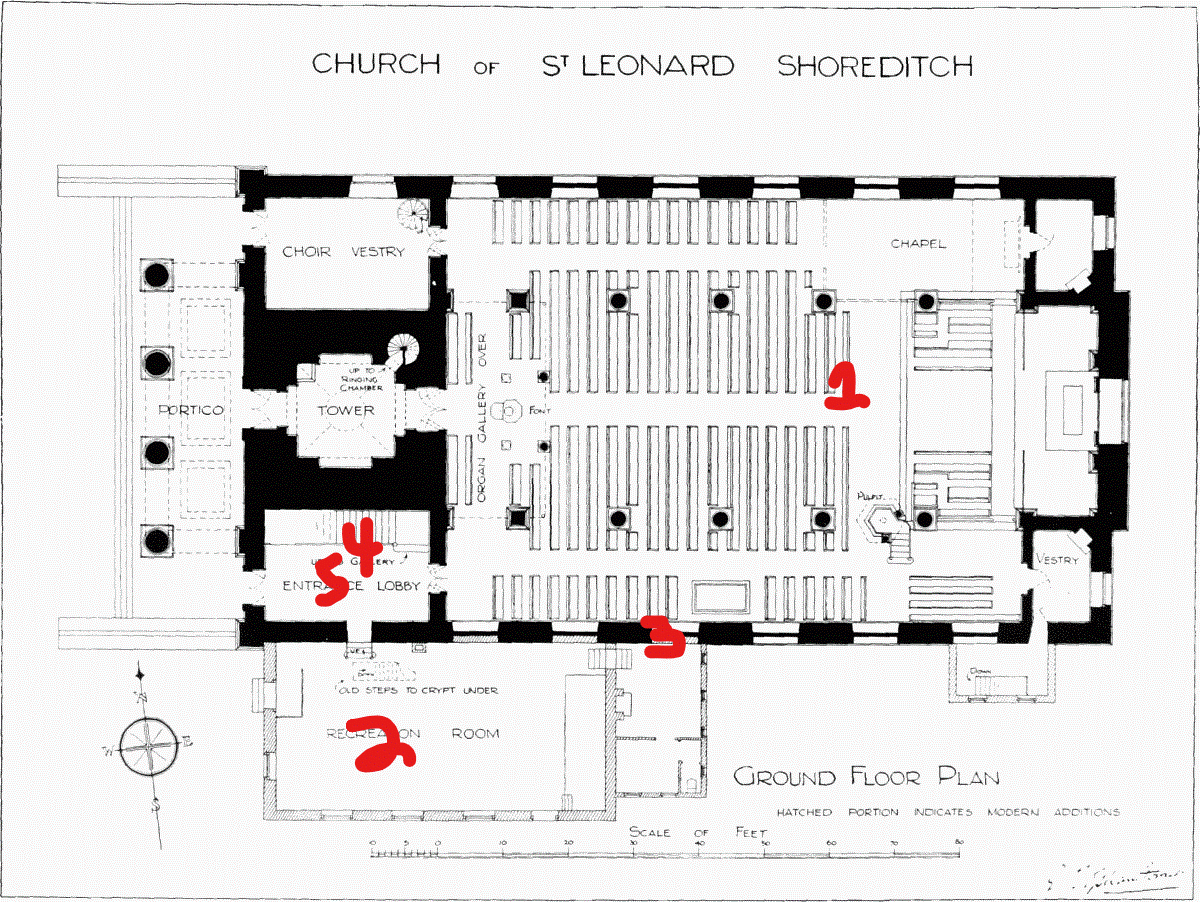


“Nothing and ever was more unbearable for a man and a society than freedom,” Dostoevsky.

Dostoevsky’s play “Demons” ( also known as the Possessed) put on in the atmospheric old church , St Leonards, in Spitalfields by the Split Moon Theater company also joined in the celebration of the 100th anniversary of the Russian Revolution in London.
It is referred to as Dostoevky’s “prophetic vision of the Russian Revolution and the bloodshed that followed ( which we saw ample evidence of at the Tate Modern exhibition see previous post) .
“The Demons” is based on a murder in 1869 of a student Ivanov by his co-conspirators and the subsequent trial. The satirical play is set in a provincial town with a cell of conspirators testing radical ideas, at that time, of nihilism. We had bizarre jumps from political speeches, to mad murmurings of a demented wife, to a bourgeois matchmaking and a love affair all centering around a “gentleman” of the town, Nikolai Stavrogin, who is also drawn into the conspiracy.
I found this explanation online, but could not find who wrote it:
” I realized that the characters weren’t the demons. They were the possessed. The demons that possessed them weren’t little red men with horns and goatees. They were much more terrible. Some of the minor demons: ignorance, vanity, conceit, lust, and indifference. The real bad asses though, were ideas like atheism, socialism and nihilism.These ideas consumed and blinded normal human beings such that they acted evilly.”
You can read the whole novel here, even just dipping in gives you a sense of the brilliant satire.
Here is a description of one of the conspirators who was eventually murdered in the play. It gives the flavor of Dostoevsky’s sardonic views on politics:
“Shatov had radically changed some of his former socialistic convictions abroad and had rushed to the opposite extreme. He was one of those idealistic beings common in Russia, who are suddenly struck by some overmastering idea which seems, as it were, to crush them at once, and sometimes forever. They are never equal to coping with it, but put passionate faith in it, and their whole life passes afterwards, as it were, in the last agonies under the weight of the stone that has fallen upon them and half crushed them.”

What was thrilling about the production was that we went from one space to another in the theater. ( At night it appeared considerably more atmospheric, crumbling, and even frightening). We started seated in the nave, then went up stairs to a second room, one part was staged on the balcony opposite us. We followed the cast around from one space to another.
Also included dance, avant-garde off beat lighting and events, Dada really.

Albert Camus admired this play enormously and restaged it in the 1950s.
The church itself is a site that dates back to the Romans and even earlier as a sacred site. Then there was an Anglo Saxon church replaced by the Normans. (We encountered this sequence over and over in England)
St Leonard is a patron saint of prisoners and the mentally ill. In Tudor times a Theater was build nearby and Shoreditch became the first English theater district.
Shakepeare premiered some of his early plays here
Here is a trailer that evokes the eeriness of the performance.